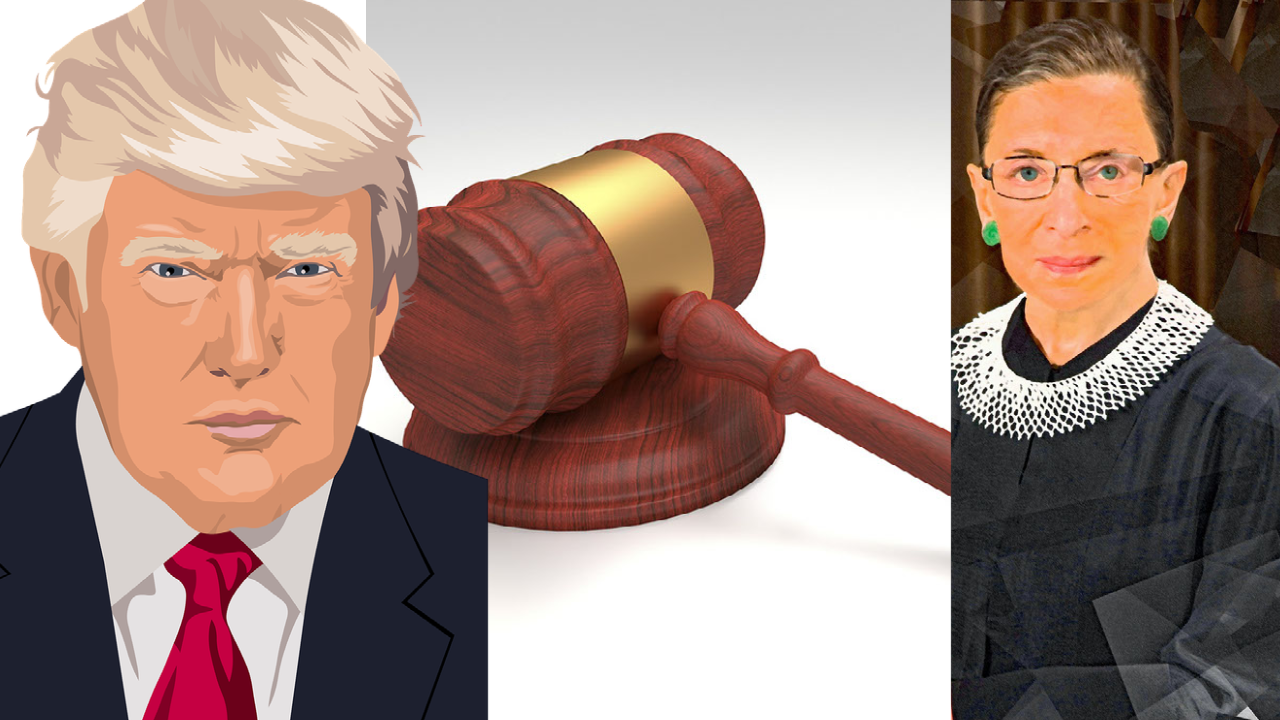BY CORIE LYNN
When Supreme Court Justice Ruth Bader Ginsberg passed away, she left two things: a vacant Supreme Court seat and a worried body of liberal supporters.
Her lengthy tenure with the Supreme Court as well as her consistent liberal voting patterns made her a household name among supporters and detractors alike.
Justice Ginsberg’s death, however, which comes less than two months before the next presidential election and in the midst of a Republican-held government, leaves President Donald Trump seeking to find a replacement that ensures a conservative court after the November election.
Filling a vacant Supreme Court seat isn’t as simple a picking as a new judge. The process to do so presents the question of whether President Trump can appoint a conservative judge before the election.
When a seat on the Supreme Court opens, whether a justice retires, resigns, dies or is impeached, the president at the time has the power to appoint a nominee.
Their nominee must then be presented to the Senate Judiciary Committee to be reviewed. With the conclusion of the committee’s hearing, they send their recommendation, or lack thereof, to the full Senate.
After hearing the committee’s recommendation, the Senate holds their own debate on the nominee. The debate in itself is unlimited, which means that, depending on the length of discussion, the confirmation process can be as short or as long as the senators need.
Regardless of timeframe, nominees can only be confirmed by a final vote from the Senate of 51-49 in the nominee’s favor.
With barely a month until the presidential election, there is much to do if Trump is to have his nominee approved. Senate Majority Leader Mitch McConnell, however, is confident that the Republican-held Senate can push a vote in this short timeframe.
As PBS points out, the confirmation process in its entirety takes 69 days on average, which places the vote after the presidential election.
Even so, Trump has previously stated that he would attempt to fill vacant seats that arise before election and plans to abide by his word.
With this in mind and time running short, the president nominated a consistently conservative court of appeals judge, Amy Coney Barrett.
But the question of whether the typically months-long process will confirm Barrett by November again arises.
Fort Hays State University Political Science Department Chair Dr. Lawrence Gould states that precedent would say no, but he believes the odds and the Senate are in favor of a quick appointment.
“I think it’s very likely this vacancy will be filled unless the Democrats find an unusual procedure (like trying to impeach Donald Trump again) or something else to slow or stop the process,” he said. “I doubt two more Republicans will step forward and declare their objections and suggest waiting until the election is complete.”
Even with a Senate with a conservative majority, there is no guarantee that the appointment will take place, especially with the narrow vote margin.
Gould points out that even if the Senate confirms Trump’s pick, the Supreme Court could face changes should Biden win the Presidency this fall.
“I think it is very likely that if the Democrats win the presidency, the Senate and the House, there will be an effort to reform the Supreme Court. Several different types of reforms could be attempted including add new justices to the court and eliminating lifetime appointments,” he said.
With the Supreme Court confirmation dependent on so many factors, the issue of quickly filling the vacancy is a complex one. The current political climate of the Senate makes the confirmation a possibility, though it is by no means a certain one.

